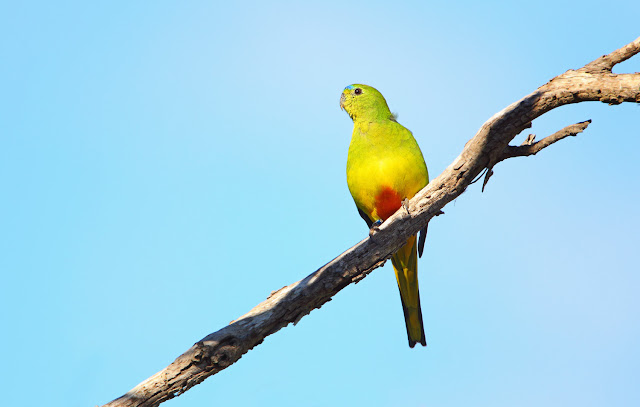Migrating north
Each year, OBPs fly at least 640 kilometres across land and sea
 |
| Photo: Dean Ingwersen |
After the breeding season at Melaleuca ends, Orange-bellied Parrots migrate to the southeast coast of Australia - to Victoria and South Australia.
Their initial route is flying and landing to rest and feed via western Tasmania, then to the Fleurieu Group of islands and King Island, and across Bass Strait.
During migration, OBPs can be found in saltmarshes, coastal dunes, grasslands and heathland, usually within five kilometres of the west and northwest coasts of Tasmania and the offshore islands.
Juveniles leave after the adults. In March, most have now started their migrations.
Since the 1950s, enthusiastic volunteers have been recording sightings of OBPs on King Island and the west coast of Tasmania during migrations.
More recently on King Island, they have been working to improve OBP habitat and eliminate predators.
In April 2021, Friends of the Orange-bellied Parrot held their first autumn survey, focussing on the area around Strahan on Tasmania's west coast.
These autumn surveys have expanded. In 2025, they will take place around Strahan and Arthur River as well as King Island, with birdwatchers hoping to glimpse OBPs on their northerly passage, adding to our knowledge of the species.
In April/May 2021, BirdLife Australia held the King Island OBP Blitz, which aimed to reveal more about OBP movements and habitats during their stop-over on the island.
Orange-bellied Parrots use King Island as an important stopover in their journey northwards. Although there is little data about how long OBPs stay on King Island, anecdotal information suggests they spend up to four weeks on the island during their northward migration.









.jpg)







